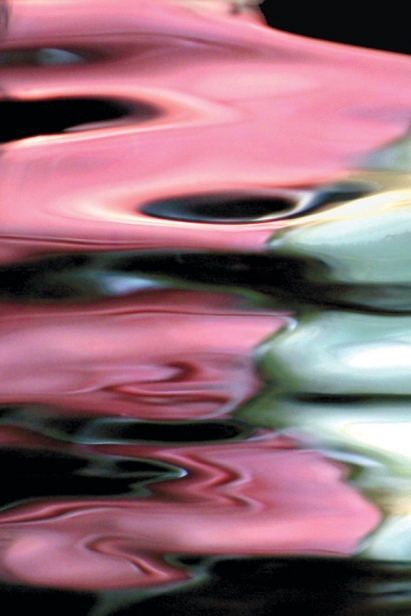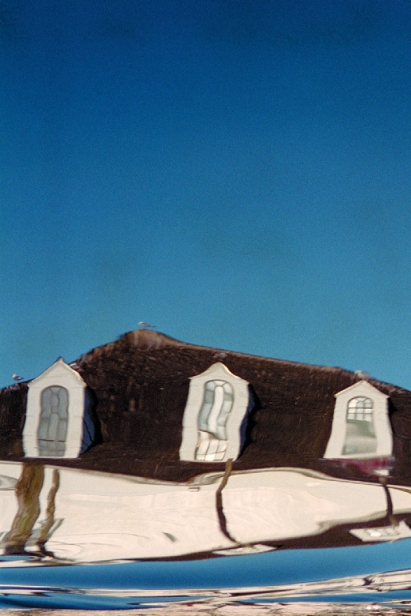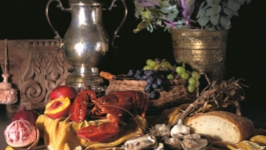Tasting Shapes: On Being a Synesthete Moved by Memories of Food
The first note I played on the piano was green. Age 6, I was home for lunch eating chicken noodle soup when a piano was delivered to our house. Curious, I struck a white key when, to my astonishment, a vision (“photon”) of green light appeared in front of me. It vanished as quickly as it arrived, at the exact moment the sound receded from the room, but I never forgot it. I quickly grabbed a green crayon, made a mark on paper (my first written music) and left it on the piano, confident that when I got home, I could play the color again.
The first time I heard the word “synesthesia” I was in a Laundromat dancing with abandon to the percussion of the dryer. When I twirled around I was horrified to discover a seated woman who had apparently been watching me for some time. Feeling exposed, I tried to explain when she interrupted me. “I think you may be synesthetic,” she pronounced.
Turns out, she was a graduate student in psychology who had read about synesthesia that week in school. She explained that synesthesia is a perceptual phenomenon that affects a small percentage of the population (about 4%) that occurs when more than one sense goes off at the same time. For example, a synesthete might see a color for every letter of the alphabet that stays the same for a lifetime, a synesthete might taste shapes, or might see color along with sound or hear sound from shapes or colors.
“Is that why the first note I played on the piano was green?” I asked, having never told anyone. Her answer was yes.
I’ve been using my synesthesia for 30 years to produce images I call “paintings by camera” in which I photograph reflections on moving water, shooting whenever I have a synesthetic response. I have exhibited my work in galleries and my work is featured in more than a dozen books. I currently exhibit at the Hammond Harkins Gallery in the Short North in Columbus. I have also exhibited in two museum shows, the first at the McMaster Museum of Art in Canada where—if I may brag—my work was hung between paintings by Charles Burchfield and Wassily Kandinsky on one wall with David Hockney at the right end and Van Gogh at the left, across from works by Joan Mitchell (all genuine synesthetes). I also exhibited at the Museum of Modern Art in Kiev, Ukraine, where I gave two lectures on how I create my images.
My process works like this: I use the surface of the sea for my canvas, the season for my palette and the wind for my brushes. I watch and wait until the movement on the water re-shapes the straight lines of a reflection into a design I like. When I feel a surge of ecstasy, I click the shutter. I never manipulate the water to influence results nor do I manipulate the image after. My goal is to capture on film what nature freely provides.
Friends would happily attest to my lack of gourmet skills. I am not, in a traditional way, an epicure or foodie. Yet it would be untrue to assume I am indifferent to gastronomic delights. To the contrary, tasting food is one of the most important ways that I process and retain experience. Smell and taste have the power to magically transport me through time by creating a chain of otherwise unrelated events, alike in edible ecstasies.
The first time I noticed a taste response was in Menemsha on Martha’s Vineyard when I was looking at a particular fishing shack in reflection. Suddenly, out of nowhere, I tasted Neapolitan ice cream. On all subsequent visits, I had the same response. A different cottage in reflection produced the taste of a stiff meringue. My taste responses do not vary over time. I could return to the same site 20 years later and the taste would be the same.
My tasty images are also redolent of time past. For instance, “Potholder Pink” stimulates two senses. The first is touch. Looking at it takes me back to a childhood afternoon when I wove a potholder for my mother that she kept in the towel drawer of our kitchen all my life. One glance at it, and I am instantly transported to the kitchen of my childhood where I am sitting at the table while my mother prepares dinner. I am suddenly smelling her onions browning on the range, adding them to salmon to prepare one of my favorite dishes—salmon patties.
If this experience sounds familiar to readers of Proust’s famous madeleine moment, that is not surprising since Proust was a synesthete like I am. Our experiences are both discussed in a book titled The Proust Effect: The Senses as Doorways to Lost Memories by Cretien Van Campen (Oxford University Press).
My image “Pistachio Mints” is named for the taste of the colored mints I found at the bakery Pistachio Vera in German Village. When I took the photograph originally, I called it “Maramor Mints,” which were a delicacy of my Columbus childhood, sold at the elegant Maramor Restaurant (owned by the Sher Family) that had a little nightclub.
“Fish” elicits two responses, depending on how close I stand to the image. If I look at it close-up and focus my eyes on the lower right-hand corner where the water appears to have edges, I feel the texture of blue satin sheets against my skin. Whereas, if I step away and take in the image in an overview, I taste swordfish. Then I notice that the reflected building looks like a fish with windows.
Taste is an essential element in my creative process. Taste and the memory of taste invade my artwork just as they do my senses in the present moment.
Learn more about Marcia and her photography at marciasmilack.com, or visit Hammond Harkins Gallery in Columbus at hammondharkins.com.







